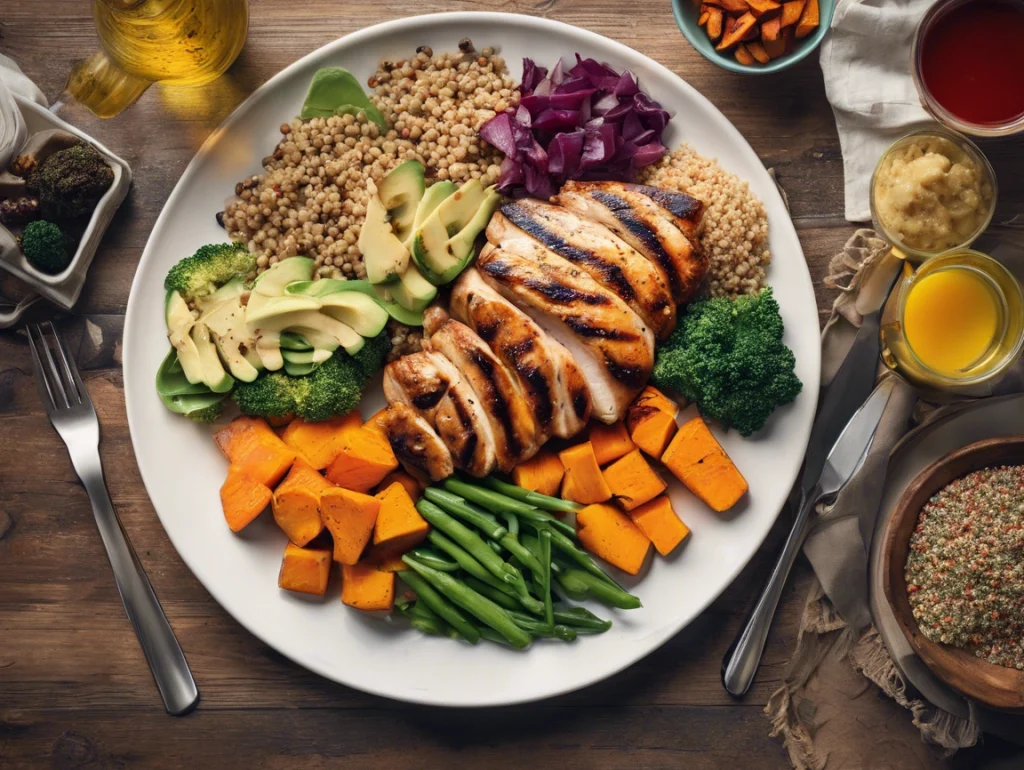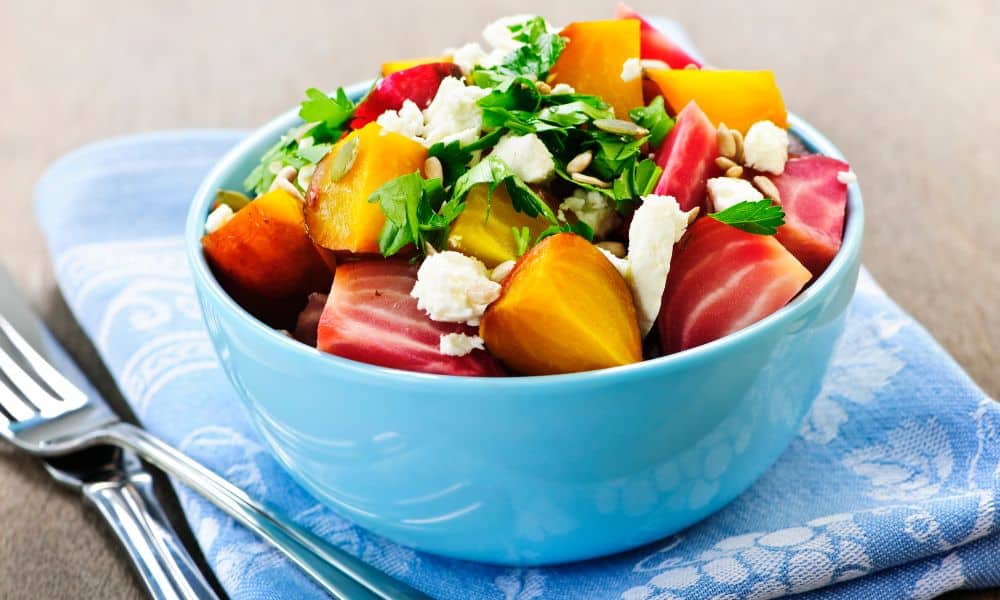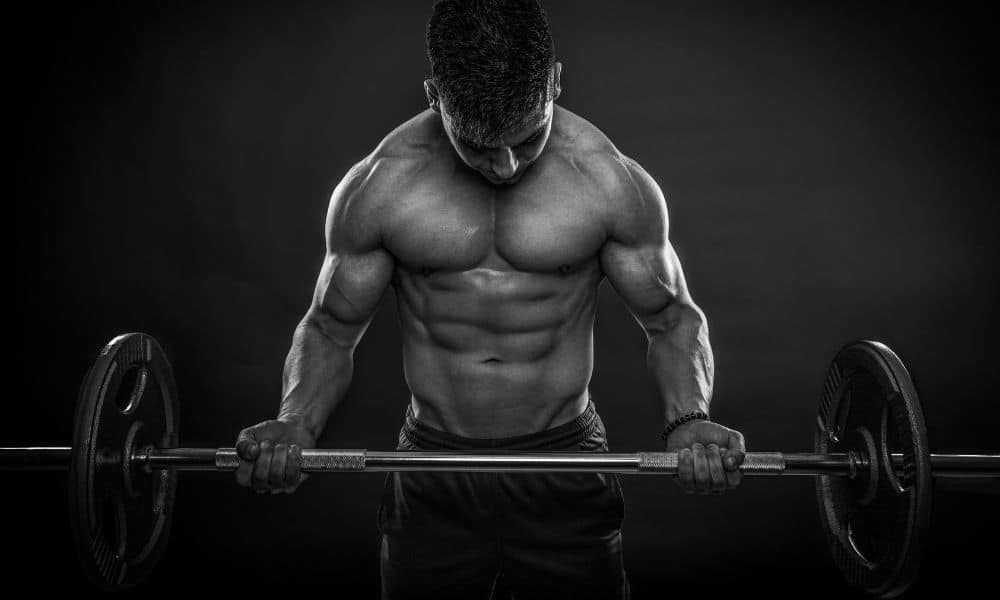If you’re looking to build muscle and burn fat, your diet will be crucial to your success. Creating a meal plan for muscle growth and fat loss can fuel your workouts, recover efficiently, and sculpt your body. But how do you create a meal plan that balances these two seemingly opposing goals? Let’s dive into how you can make it happen.
What Nutrients Support Muscle Growth and Fat Loss?
Protein, carbohydrates, and healthy fats are the primary nutrients for muscle growth. Each plays a role in both muscle development and fat loss.
- Protein: It’s the building block of muscle. To build muscle, you should aim for 1.6 to 2.2 grams of protein per kilogram of body weight each day. This provides the necessary amino acids to repair and grow muscle fibers, especially after intense training.
- Carbohydrates: While some diets recommend reducing carbs to lose fat, you still need them for muscle growth and performance. Carbs provide the energy needed for high-intensity workouts. Choose complex carbs like oats, sweet potatoes, and brown rice to avoid fat gain.
- Fats: Healthy fats are crucial for hormone regulation, which can impact muscle growth and fat loss. Aim to get 20-30% of your daily calories from fats, focusing on sources like avocados, nuts, seeds, and olive oil.
How Do You Calculate Calories for Muscle Growth and Fat Loss?
To gain muscle and lose fat, you need to balance your calorie intake. Start by calculating your basal metabolic rate (BMR) and adding calories for your physical activity level. For muscle growth, a slight calorie surplus (100-300 calories above maintenance) is necessary to provide your body with enough energy for muscle synthesis. At the same time, to lose fat, a moderate calorie deficit (100-300 calories below maintenance) is required.
To achieve both, a cycling approach—where you alternate between days in a surplus and days in a deficit—can help. For instance, you might eat in a slight surplus on training days and a deficit on rest days.
What Are the Best Foods for Muscle Growth and Fat Loss?
When planning your meals, focus on nutrient-dense, whole foods to help you reach your goals.
Protein Sources:
- Chicken breast (high protein, low fat)
- Egg whites (complete protein, low calorie)
- Greek yogurt (high protein, contains probiotics)
- Tofu and tempeh (plant-based protein)
- Salmon (protein and omega-3 fats for inflammation)
Carbohydrate Sources:
- Quinoa (complex carb with a higher protein content)
- Sweet potatoes (low glycemic index, long-lasting energy)
- Brown rice (a good source of fiber)
- Oats (slow-digesting carbs for sustained energy)
- Fruits like berries (fiber and antioxidants)
Healthy Fat Sources:
- Avocados (rich in monounsaturated fats)
- Nuts and seeds (good sources of fats and protein)
- Olive oil (anti-inflammatory properties)
- Fatty fish like salmon (provides omega-3 fatty acids)
How Should You Time Your Meals for Muscle Growth and Fat Loss?
Meal timing can also be important in optimizing muscle growth and fat loss. Aim to eat every 3-4 hours to maintain energy levels and prevent muscle breakdown.
- Pre-workout meal: Eating protein and carbs 1-2 hours before your workout will give you the energy to train hard and stimulate muscle growth.
- Post-workout meal: After your workout, consume a meal rich in protein and carbohydrates. This is when your body is most primed to absorb nutrients and repair muscles. Fast-digesting carbs like rice cakes or a banana with a protein shake can be ideal.
- Before bed: Having a protein-rich snack, such as Greek yogurt or cottage cheese, can provide your body with amino acids overnight, helping to prevent muscle breakdown during sleep.
How Should You Structure a Day of Eating?
Here’s an example of a daily meal plan for muscle growth and fat loss:
- Breakfast: 3 scrambled eggs, spinach, ½ avocado, and whole grain toast
- Mid-morning snack: Greek yogurt with a handful of mixed nuts and berries
- Lunch: Grilled chicken breast, quinoa, and roasted vegetables (broccoli, carrots)
- Afternoon snack: A protein shake and an apple
- Dinner: Baked salmon, sweet potatoes, and steamed asparagus
- Pre-bed snack: Cottage cheese with a sprinkle of chia seeds
How Can You Adjust Your Meal Plan for Results?
It’s important to listen to your body and adjust your meal plan based on progress. If you’re not seeing the fat loss you want, consider adjusting your portion sizes or carb intake. If muscle growth stalls, you may need to increase your calorie or protein intake.
Tracking your food intake with apps like MyFitnessPal or Cronometer can help you stay on track. Aim for a balanced macronutrient ratio of 40% protein, 30% carbohydrates, and 30% fats to maintain muscle while losing fat.
Key Takeaways:
- Focus on high-protein, nutrient-dense foods.
- Balance your calorie intake by cycling between surplus and deficit.
- Incorporate complex carbs and healthy fats to support performance and recovery.
- Eat protein-rich meals daily to promote muscle growth and prevent fat gain.
- Adjust your meal plan as needed based on your progress and goals.
By following this approach to a meal plan for muscle growth and fat loss, you’ll be able to fuel your workouts, recover faster, and achieve a leaner, more muscular physique.




